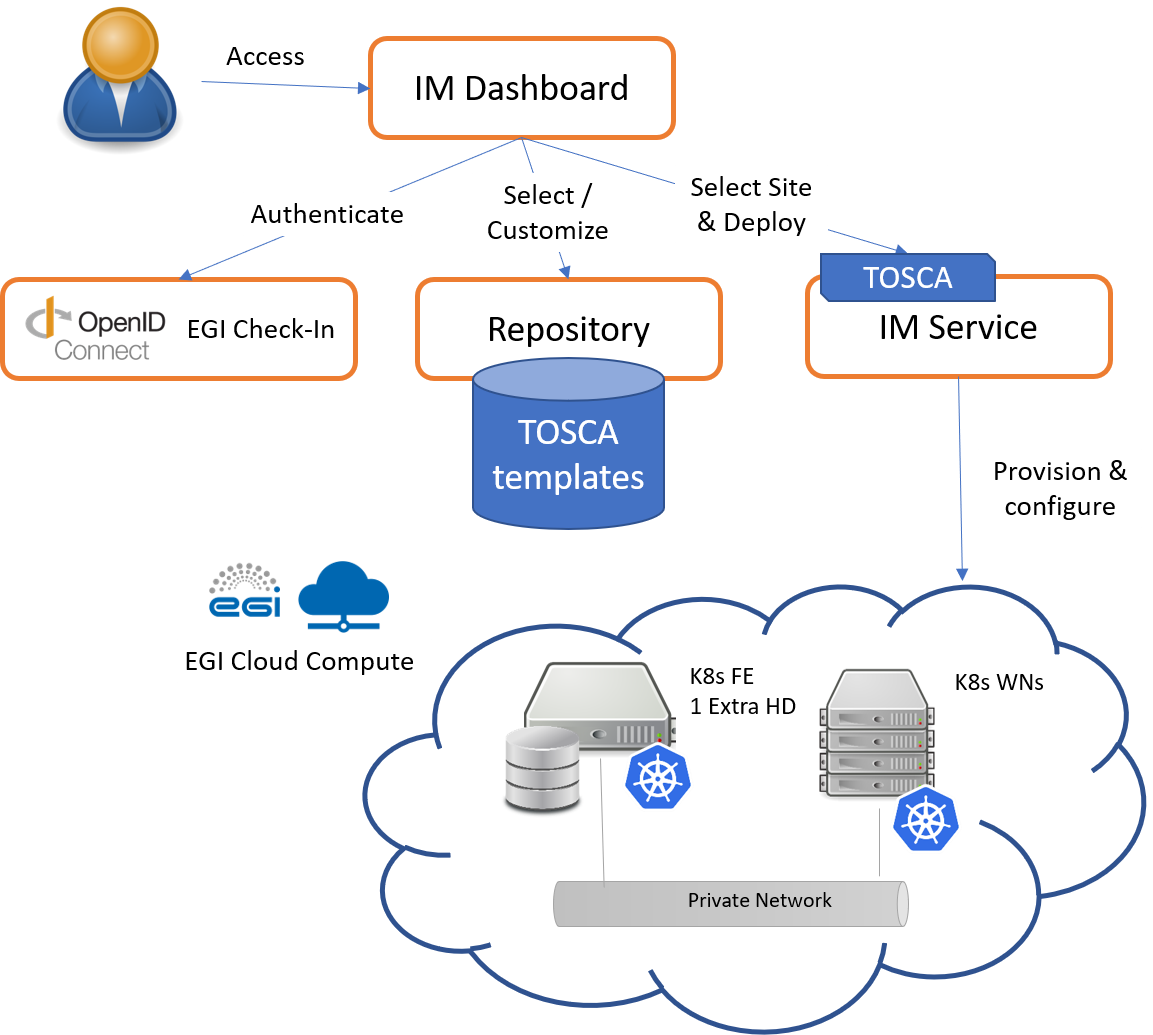Infrastructure Manager
Benefits
The usage of the Infrastructure Manager to deploy Kubernetes clusters has the advantage that Virtual Machines and their containers are started automatically. The alternative would be that VMs had to be created by hand and that containers would be started there manually.
Infrastructure Manager (IM) is an open-source service that deploys complex and customized virtual infrastructures on multiple back-ends. The IM automates the deployment, configuration, software installation, monitoring and update of virtual infrastructures. It supports a wide variety of public and on-premises Cloud back-ends, thus making user applications Cloud agnostic. In addition, it features DevOps capabilities, based on Ansible to enable the installation and configuration of all the user required applications providing the user with a fully functional infrastructure.
The usage of the Infrastructure Manager to deploy Kubernetes clusters has the advantage that Virtual Machines and containers therein are started automatically. The alternative would be that VMs had to be created by hand and that containers would be started there manually.
Features and benefits:
Multi-Backend: Deploy on on-premises, public and scientific Clouds, and container orchestration platforms.
Extensible plugins: Plugins available for OpenNebula, Amazon EC2, Google Cloud Platform, Microsoft Azure, Docker, Kubernetes, FogBow, T-Systems OTC, OpenStack, CloudStack and EGI Federated Cloud (OCCI).
Hybrid Infrastructures: Deploy virtual infrastructures that span across multiple providers.
Embrace DevOps: Powered by Ansible, the IM provides recipes for common deployments (Hadoop clusters, etc.).
Interfaces: Featuring a CLI, a web GUI, an XML-RPC service API and a REST API.
The Infrastructure Manager is a production service supported via the EOSC Portal. More details available at: https://marketplace.eosc-portal.eu/services/infrastructure-manager-im
Architecture
